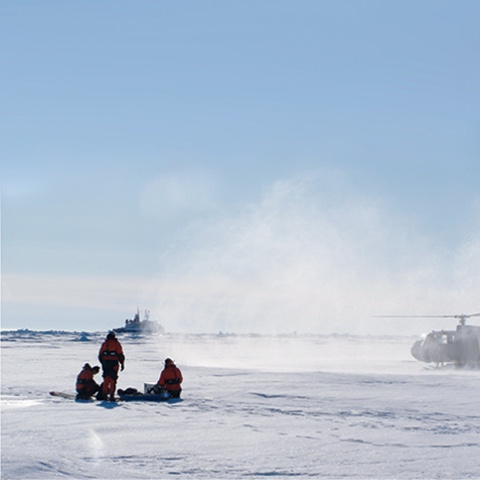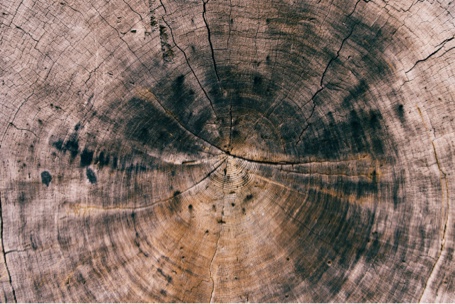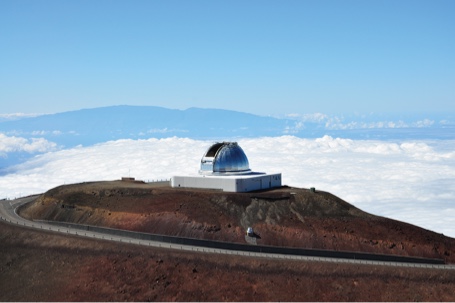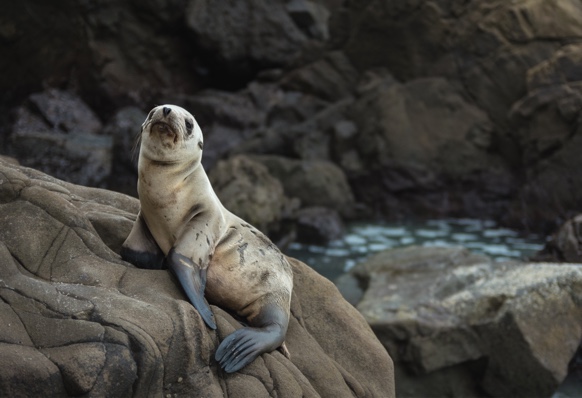A changing world
Impacts
The effects of climate change are being felt on all continents across the world and are predicted to become more frequent and more intense in the coming decades.
Different countries and regions face different problems.
These changes to the climate have the power to transform our world, affecting food and water supplies and our health. The bigger the problems, the more difficult and expensive it will be to solve them – which is why taking early action to deal with climate change is the best option.
How do we measure climate change?
Samples of ice taken from deep below Antarctica contain bubbles of air from 650 000 years ago. They tell us about greenhouse gas levels in the past, and reveal that concentrations of CO2 and methane in the atmosphere were much lower than they are today.

Tree rings are a record of a year’s growth. Scientists study rings in very old trees to find out how the climate has changed over time. For example, rings are thinner when the weather is cold or dry.

The Mauna Loa Observatory in Hawaii, USA, has been measuring CO2 levels in the atmosphere since 1958. Measurements taken from this remote location, where the air is undisturbed, are a good indicator of global CO2 levels.

Satellite images can be used to show changes in Arctic and Antarctic sea ice cover over a period of time.

The bad news
Scientists agree that the planet is warming up faster than ever because of the vast amount of greenhouse gases that humans are pumping into the atmosphere. This includes activities such as burning fossil fuels (coal, oil and gas), driving cars and cutting down forests.
Many of us have seen – and even experienced – the effects of climate change. But it is not just about extreme weather like floods, droughts and hurricanes. Slower and less noticeable changes in our climate have the potential to completely alter the way we live.
The good news
The good news is that in Paris in December 2015, 195 countries (practically the whole world) agreed the first ever legally-binding global deal to tackle climate change. In the EU and around the world, governments, companies and individuals are already working to tackle its causes and adapt to the changes it brings.
We all have a part to play because climate change is a global problem, which can affect each one of us.
We all share one planet and the changes we make in one place can affect others far away. You could say our behaviour makes a lasting impression, like a footprint. So, through our actions and choices, each one of us can take steps to leave smaller footprints and help tackle climate change.
Extreme weather caused by climate change

How to…
Click on the interactive map to discover examples of weather-related anomalies happening around the world
Oceans on the frontline
Rising sea levels
Between 1901 and 2010, the average sea level across the world rose by 19 cm. There are two main reasons for this: the first is that as water gets warmer it expands and takes up more space. The second is that global warming is causing glaciers and the giant ice sheets in Greenland and Antarctica to melt faster, adding more water to the oceans.
The resulting rise in sea levels causes floods on low-lying coastlines and is threatening to submerge some islands completely.
Higher sea levels can also harm important coastal ecosystems like mangrove forests, which are safe havens for young fish and other wildlife, protecting them from storms that erode coasts. And when salt water soaks into land, it ruins drinking water supplies and spoils soils, making it impossible to grow crops.
Islands under threat
Can you imagine what it is like to know that one day your home may be submerged by water?
The Marshall Islands in the northern Pacific Ocean is one the most vulnerable island countries in the world, with much of the land lying only around three metres above sea level.
Scientists say a local rise in sea level of just 80 cm could submerge two-thirds of the land.

Warmer oceans
Climate change is also having a big impact on the world’s oceans. Oceans have absorbed more than 90 % of the additional heat from atmospheric changes caused by our activities over the past 40 years.
While this means that the atmosphere is not warming as much as it could, it is warming the oceans. Species like fish, shrimp, whales and plankton (tiny organisms eaten by fish) respond to the warmer water by migrating towards the poles where it is cooler.
However, tiny shrimp-like krill, eaten by fish and whales, breed best in cold water. Warmer water means fewer krill and fewer fish. Coral reefs, which are home to over 25 % of all marine life and where many fish breed, also struggle to survive when the water gets too warm.
The oceans absorb around a quarter of the carbon dioxide we release every year, and rising levels of CO2 mean greater amounts of the gas being stored in the seas. This helps to regulate the climate but is changing the chemical balance in the oceans.
The waters are becoming more acidic, which is harmful to marine life, in particular to shell-building sea creatures like lobsters, oysters and corals.
This is of particular concern as they are at the beginning of the food chain for a number of species.
Animals hit hard by climate change
Polar food threat
Many land and sea species have already moved to new locations. Some will be at greater risk of extinction without action to limit climate change.
The largest polar predators, like leopard seals and polar bears, need tiny algae that grow on the underside of ice to survive. These algae are the start of almost all polar food chains. Plankton eat the algae, small fish and krill and other creatures eat the plankton, and so on up the food chain to fish, penguins and seals. With less Antarctic and Arctic sea ice, these food chains are breaking down.
And which consequences on humans?
Climate change has brought permanent alterations to the Earth that are increasingly changing the way humans live.

Dangerous mosquitos
Changes in the climate also mean that some insects that previously lived in one region are now invading new places.
Some mosquitoes transmit diseases such as yellow fever, dengue fever, chikungunya and malaria when they bite. Originally, these insects lived only in tropical places, but some live and breed in southern Europe today because the climate is warmer.
Less food, more problems
Searing heat and a lack of water are a disastrous mix for crops and for world food supplies. Plants need water to survive, and without plants to eat, livestock such as cattle starve too. When the top layer of soil in a farmer’s field dries out it becomes dusty and blows away, taking with it vital nutrients the plants need.
The result is less food, which is a big problem because the world’s population is set to increase from 7 billion today to 9 billion by 2050, so we will need more food, not less.
Our food supplies are also threatened by negative effects of climate change on bees and other pollinators. All of this means that we need to prevent climate change as much as we can, while adapting our agriculture to deal with a changing climate.
Sinking city
The wooden piles on which Venice is built are disappearing into the mud in the shallow lagoon in the Adriatic Sea.
With the lagoon waters rising by about 2 mm each year, the combined effect is a 4 mm-a-year rise in the sea level.
Frequent floods damage the historic buildings, cover paths and affect tourism.
However, a project is underway to install 78 huge steel gates to protect the city from floods up to 3 m. In addition to the gates, Venice will receive extra protection via the restoration of salt marshes, which act as natural barriers against sea level rise.
As you can see, the situation is not optimal, neither for the Earth, nor for humans... So… what are the solutions?
